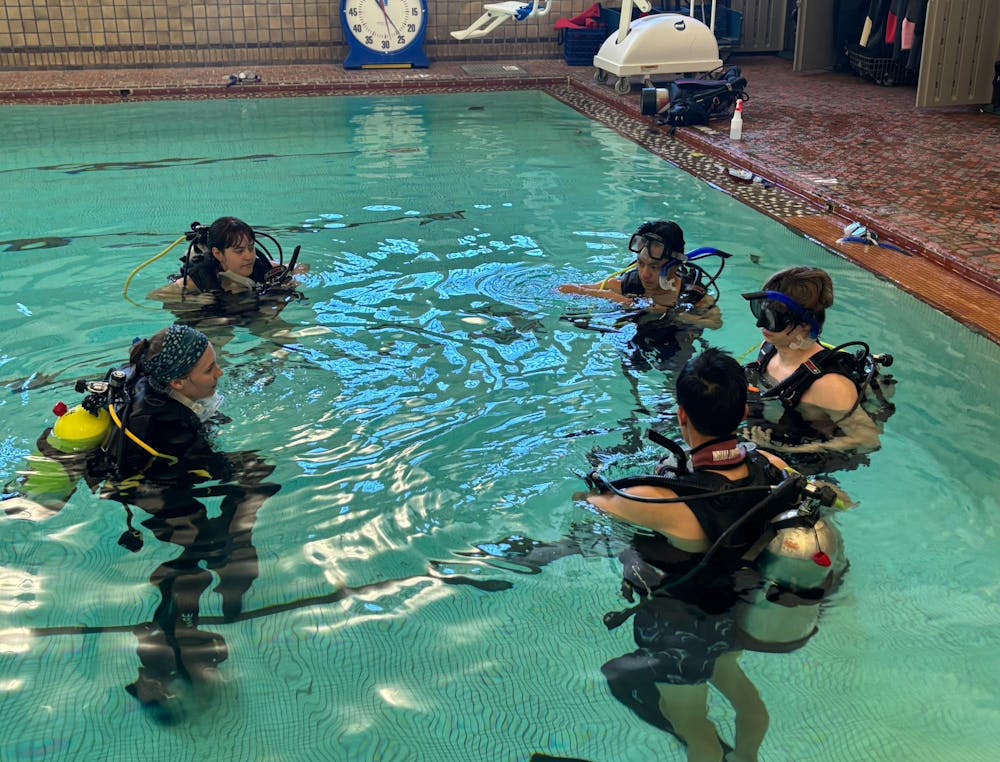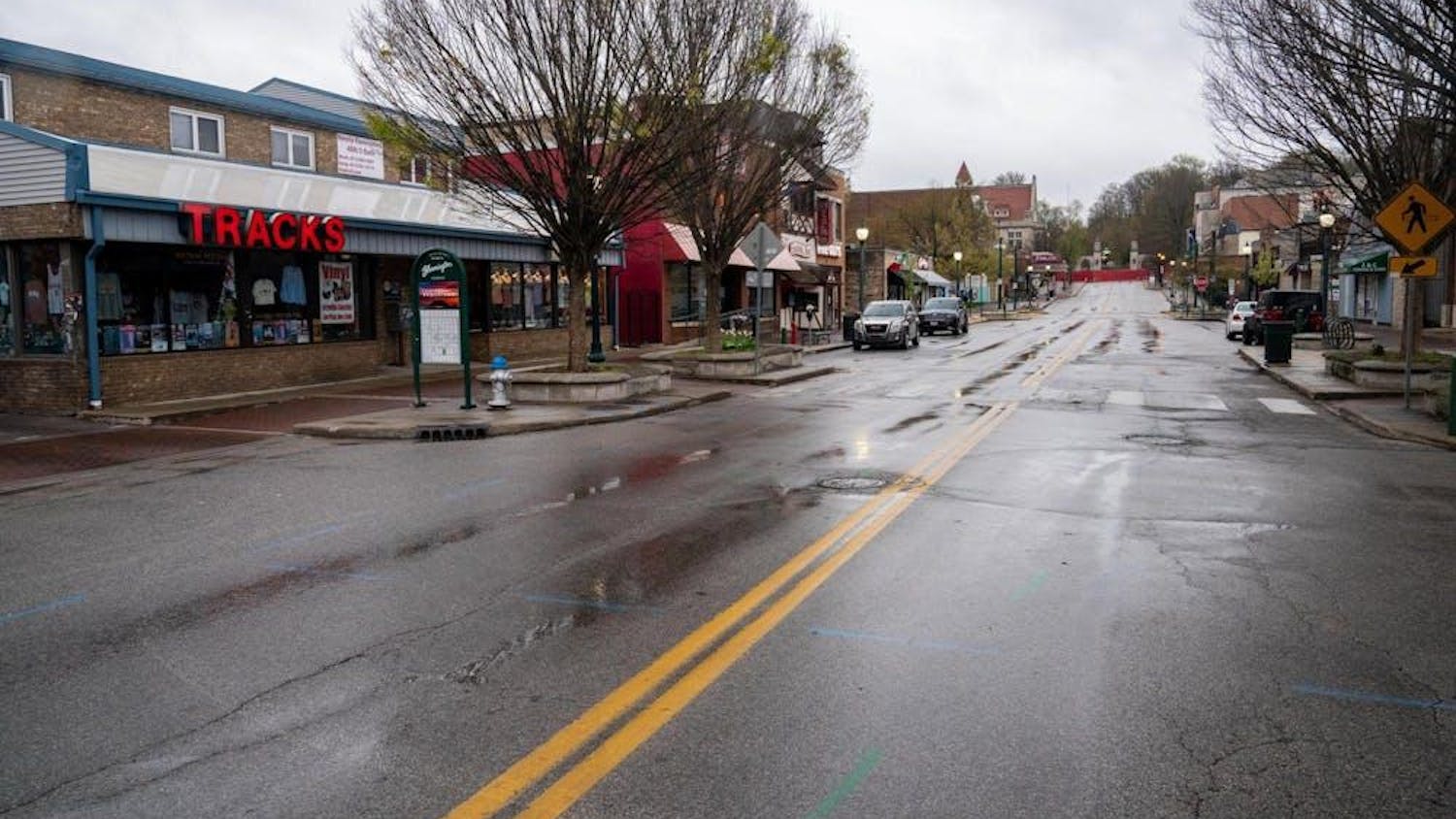Members of the Wilderness Medicine Student Interest Group suited up in equipment to scuba dive Saturday at the Bill Garrett Fieldhouse to learn how to provide emergency care for scuba diving injuries.
With diving masks, fins and oxygen tanks, the students dove into the water to improve their skills and learn how to treat patients with limited resources.
The event was open to all levels of divers, giving them the chance to practice their knowledge in an instructed scuba diving session in Pool 194. The students were asked to take a 30-to-60-minute online course before participating in the event. The course covered emergency oxygen administration training and how to spot symptoms of decompression sickness and arterial gas embolism, which interrupts blood flow.
The Wilderness Medicine group is offered through the IU School of Medicine. The group aims to prepare medical students for how to care for patients in environments where there are limited resources through training programs and education.
Fourteen Wilderness Medicine SIG members split up into two different groups: one group sat in a classroom for a lecture and the other participated in scuba diving. The groups then switched after each two-hour session. The lecture covered scuba and water safety with hands-on training in emergency oxygen administration.
IU Diving Safety Officer Sam Haskell manages the diving program at IU. In his lecture, Haskell identified the symptoms and effects of decompression sickness, barotrauma and arterial gas embolism, which are pressure-related injuries from scuba diving.
Haskell also talked about how physicians can respond to diving injuries before patients get to the hospital by administering oxygen and contacting emergency services such as Divers Alert Network about the patient’s symptoms.
The Divers Alert Network annual diving report from 2020 concluded that calls made to their hotline typically occur more often between May and August, as that is when scuba diving is most practiced. The most common diving injury the hotline receives is barotrauma, with 1,053 injuries reported in 2018.
Haskell studied underwater archaeology and anthropology as an undergraduate at IU and has been a scuba diving instructor since 2014. He was raised by two scuba diving instructor parents, and said he figured he would combine his education with the training program.
“I think that it is a wonderful thing that IU offers,” Haskell said. “We have a really strong program, a very safe program and we have a lot of resources to support students in both, like, scientific diving activities, but also recreational diving activities.”
IU’s diving program offers training for scientific and recreational scuba diving along with free snorkeling activities for students to learn how to navigate the waters safely.
Julian Spangler, a second-year medical school student, is the outings coordinator for the Wilderness Medicine SIG. Spangler said he wanted to organize the event with Haskell after a similar successful scuba and dive medicine event last year.
“It’s a safe space where divers of all levels can come and either learn to scuba dive or practice their skills there,” Spangler said. “You don’t need a certification for this, as long as you’re able to swim, they’re happy to have you.”
After the lecture portion, the other group of attendees put on their swimwear, diving masks and fins. They also picked up snorkels, a diving regulator, oxygen tank, weights and a Buoyancy Compensator Device for underwater control.
The divers stayed underwater for short periods of time, about 20 minutes at most, and swam across to the other end of pool while descending deeper in the water. The divers were also provided with a GoPro camera to take action shots.
Alexa Rand graduated with bachelor’s degrees in biology and underwater science from IU in May 2024 and plans to attend medical school in the fall of 2025 at IU Indianapolis. Rand works at the IU Center for Underwater Science as a divemaster where she leads recreational dives.
Rand said she was taking a variety of math and science courses and wanted to break up that schedule to get a scuba certification because of her interest in the water.
“My absolute favorite course I have ever taken at any point in my life is our diver safety and rescue course,” Rand said. “A rescue course is definitely the biggest one that’ll introduce you to more in-depth aspects of dive medicine.”
SPH-I 470 “Diver Safety &Rescue” is offered typically during the fall semester, taught by Haskell. The course covers advanced topics of diving physics and rescue.
The Wilderness Medicine SIG plans to hold the event again next year for students to get certification that they received the scuba and dive medicine training.




